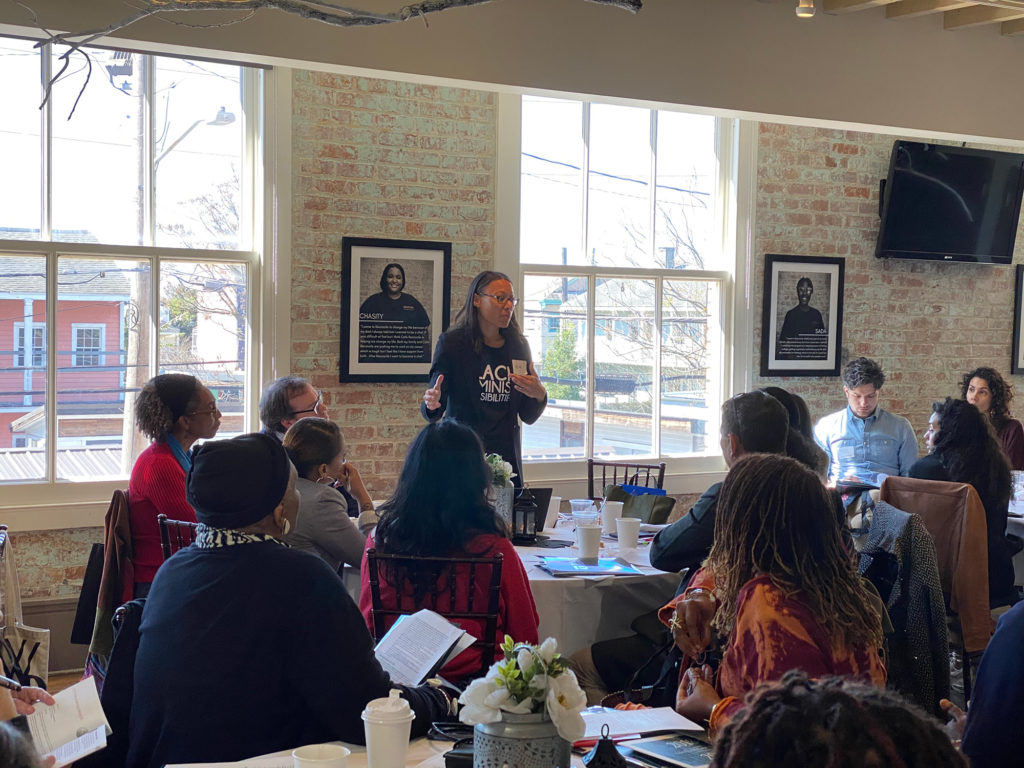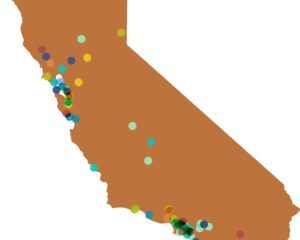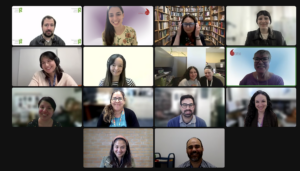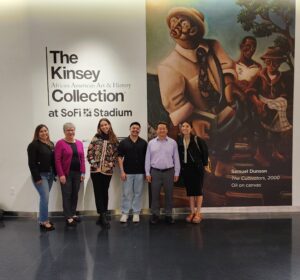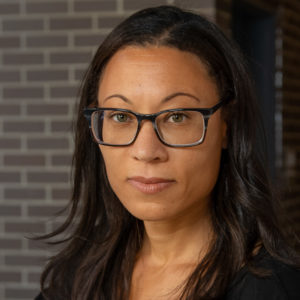 This month we are pleased to share the thoughts of Mina Para Matlon, California Humanities board member and Treasurer. Until recently, Mina was the Managing Director of Imagining America, a consortium based at UC-Davis that brings together scholars, artists, designers, humanists, and organizers to imagine, study, and enact a more just and liberatory ‘America’ and world. She is now engaged with a variety of collectives and organizations as a Cultural Worker. She spoke with us about her time at Imagining America, the liberatory through-line of her career, and where she feels at home.
This month we are pleased to share the thoughts of Mina Para Matlon, California Humanities board member and Treasurer. Until recently, Mina was the Managing Director of Imagining America, a consortium based at UC-Davis that brings together scholars, artists, designers, humanists, and organizers to imagine, study, and enact a more just and liberatory ‘America’ and world. She is now engaged with a variety of collectives and organizations as a Cultural Worker. She spoke with us about her time at Imagining America, the liberatory through-line of her career, and where she feels at home.
1. As you depart Imagining America, what did you learn?
I joined the Imagining America (IA) team in 2017, following a politically and socially charged year for this country that included the movement organizing work led by Indigenous water protectors at Standing Rock and a sharp pivot in federal policies spearheaded by a new administration. Like many others, I was grieving: for myself, for my communities, for the magnitude of divergent visions of who we are and what we might become as a nation. But coupled with this grief was a redoubled commitment to build new ways of being. It was answering the call to pre-figure cultures of care and belonging – to dream of them, to experiment with how they might be made manifest, to feel the textures and complexities of their tangibility – that drew me to work in service alongside the artists, scholars, educators, organizers, and students who comprise the IA community.
What did I learn? There are many experiences I’m continuing to unpack from my tenure as IA’s inaugural managing director. Standing out for me now is the transformative power of story. Its ability to heal – both ourselves and others; to bridge differences; to shape what we see and hear; and to widen our imaginations as we craft solutions to the challenges of the present and the worlds we leave behind for our children and generations to come. I have personally experienced this power. I sat transfixed as the daughter of a father who had committed almost unimaginable harm shared her family’s story as she spoke in defense of his humanity, and felt a truth appear in my heart that I’m still processing in my mind. Foregrounded as well during my time at IA is what Brené Brown calls ‘the power of vulnerability’. Showing up to our work as our whole selves and placing primacy on structures that invite others to show up this way too. And joy! Discovering the multitude of ways to find joy as we engage in the long-haul work of collective liberation.
2. Your career includes interesting intersections: attorney and dancer, community organizer and researcher. How do these different areas feed each other?
Many of us who do cultural work have hyphenated identities. Earlier in my career I thought I had to focus on one profession, and I dedicated myself to developing the knowledge and skills of that particular field. But as the way I began to think about my work evolved, as situated not only within the greater context of the arts and culture ecosystem but as tied to a commitment to social, economic, and environmental justice, I started to see my various professional identities as more of a toolkit. I now identify as a cultural worker. A term that has deep social movement roots, to me it means that I hold myself accountable to a particular cultural vision (liberation), and that I bring to the places and spaces where I am called the full arsenal of perspectives, skills, and cross-sectoral connections that these various roles have afforded me. In practice, this may look like identifying areas of potential liability in organizing an event, introducing an arts-based and community participatory action approach into a research design, and working with an arts collective to document and investigate the impact of adopting different economic models.
3. You have lived in a number of different places – what is it about living in California that you find compelling?
In many ways, California is a microcosm of the cultures and geographies of the various places I’ve lived. Years ago, I was working on an NEA-sponsored research project focused on ethnocultural arts organizations, and not only did California house the greatest density of these groups in the entire country, but we also have some of the most cross-culturally innovative organizations and – from what we could find in that research – organizations that were the only ones in the country to tell the stories and present the traditions of a particular cultural community. Couple this cultural richness with an equally rich history of movement organizing work that continues to pulse with vibrancy today, and this powerhouse combination is fertile ground for anyone seeking to make a positive impact in this world. Our state is not, of course, without a number of real challenges and contradictions, but then this reality gives added urgency and purpose to the work of a cultural organizer. And I’d be remiss in not mentioning California’s stunning beauty. When I’m feeling overwhelmed, I don’t have to go far to soak up the natural healing properties of the quiet symphony of a forest grove or the salty air of the Pacific.

